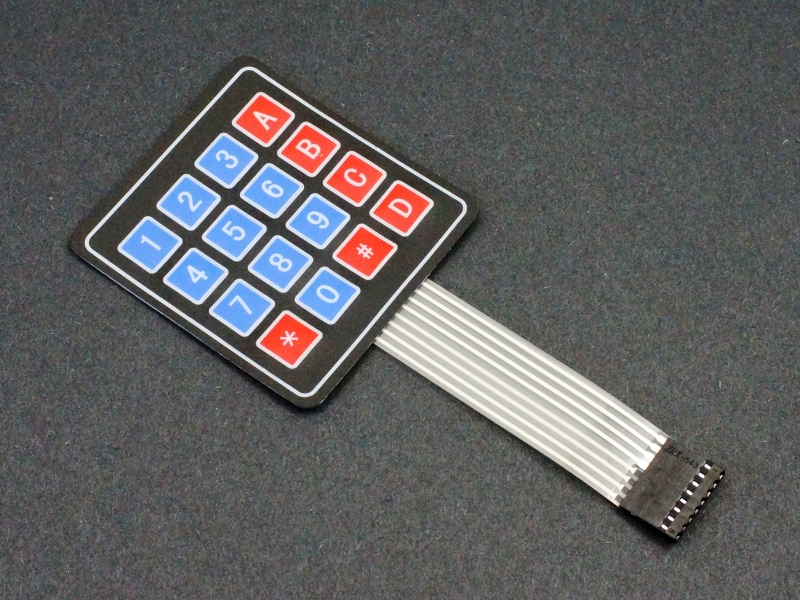Discover How Membrane Switches Function and Their Role in Modern Electronic Devices
Membrane Switches stand for an innovative combination of innovation and design within the world of modern-day electronics, functioning as essential user interfaces in various devices. Included multiple layers, these buttons utilize pressure-sensitive mechanisms to assist in user interaction. Their applications cover numerous markets, from consumer electronic devices to medical tools, highlighting their convenience and value. Understanding the details of Membrane button performance and their more comprehensive ramifications in enhancing individual experience invites additional expedition into their layout, advantages, and the cutting-edge developments forming their future in technology.
What Are Membrane Switches?

Membrane buttons are identified by their durability and resistance to environmental elements, such as dust, wetness, and extreme temperatures. They can be personalized with different graphics, colors, and tactile comments choices, improving individual experience while preserving aesthetic appeal - membrane switches. Additionally, the consolidation of printed circuits enables seamless integration into devices, improving total capability.
The flexibility of Membrane buttons is noticeable in their capability to support both intricate and straightforward control functions. They can incorporate functions such as LED indicators and touch-sensitive innovation, catering to certain customer needs. As innovation remains to evolve, Membrane Switches stay essential for enabling instinctive and effective interface, thus playing a pivotal function in the development of modern-day electronic tools.
Parts of Membrane Buttons
Membrane switches are composed of a number of key parts that work with each other to produce a useful and trustworthy interface. The key elements consist of the graphic overlay, sticky layer, spacer layer, and conductive traces.
The graphic overlay serves as the customer interface, usually printed on an adaptable substrate such as polyester or polycarbonate. This layer not just provides aesthetic allure but likewise consists of tactile comments, aesthetic cues, and safety attributes. Below the visuals overlay exists the adhesive layer, which protects the button to the device and makes sure resilience against ecological stresses.
The spacer layer is important for keeping the necessary space in between the visuals overlay and the circuit layer. When pressure is applied, this gap enables for the activation of the switch. The conductive traces, normally made from silver or carbon, create the electric pathways that finish the circuit when the switch is involved.
In addition, a backing layer may be included for structural support and insulation. These parts team up seamlessly, guaranteeing that Membrane buttons are both straightforward and resistant, making them important in different modern-day digital applications.
Just How Membrane Switches Work
How do Membrane Switches feature successfully within electronic devices? Membrane Switches operate on the principles of pressure-sensitive technology, utilizing a split building and construction that consists of graphic overlays, adhesive layers, and conductive components. When a customer uses pressure to the switch, the leading layer flaws, enabling the conductive elements beneath to make call and finish an electrical circuit. This activity causes the preferred function within the device.
The style of Membrane buttons is important for their effective procedure (membrane switches). The layers are carefully crafted to provide responsive feedback, durability, and resistance to ecological elements such as dampness and dust. The incorporation of domes-- little, elevated areas within the button-- improves responsive reaction, giving individuals with a noticeable click feeling upon activation
Moreover, Membrane buttons can be customized in regards to dimension, shape, and graphics, making them ideal for various applications. They are commonly used in control panels, clinical tools, and consumer electronic devices due to their smooth layout and reliability. Generally, the efficient functioning of Membrane buttons is pivotal in Discover More Here improving customer interaction and guaranteeing smooth procedure in modern electronic gadgets.

Applications in Modern Tools
Using their one-of-a-kind layout and functionality, Membrane switches have ended up being important elements in a variety of modern electronic devices. These versatile interfaces are employed in consumer electronics, industrial devices, clinical tools, and auto controls, offering smooth individual interaction.
In consumer electronics, Membrane switches are commonly found in devices like microwaves, cleaning makers, and various other family gadgets, where they allow user-friendly control with a smooth profile. Their low-profile layout promotes assimilation right into small devices, enhancing visual allure without jeopardizing performance.
In industrial applications, Membrane Switches function as control panels for equipment, using toughness and resistance to extreme atmospheres. Their ability to withstand dampness and pollutants makes them perfect for use in production and processing industries.
Clinical gadgets also check out here take advantage of Membrane buttons, which are created to be simple to tidy and preserve, guaranteeing health in scientific settings. They are usually utilized in diagnostic tools, client monitoring systems, and mobile medical devices, where integrity is vital.
Advantages of Membrane Switches
Among the key advantages of Membrane switches is their versatility, which enables them to be customized for a range of applications throughout several industries. These buttons can be created in various sizes and shapes, accommodating one-of-a-kind product needs while offering smooth integration right into gadgets. Their thin account enables a small and streamlined design, commonly enhancing the aesthetic allure of electronic products.
An additional significant advantage is their longevity - membrane switches. Membrane switches are normally immune to dust, wetness, and chemicals, making them excellent for harsh atmospheres. This strength expands their lifespan compared to standard mechanical buttons, reducing the need for regular substitutes
In addition, Membrane Switches deal cost-effectiveness. The manufacturing process involves printing innovations that lessen manufacturing prices, particularly for large runs. This affordability, integrated with low upkeep demands, makes them an eye-catching alternative for manufacturers.

Final Thought
In verdict, Membrane Switches represent a significant development in customer interface technology within modern electronics. Their layered building, pressure-sensitive operation, and adaptability to different applications underscore their importance across multiple industries. The resilience and environmental resistance of Membrane Switches additionally improve their charm, making them a favored choice for manufacturers looking for reliable and personalized options. As the demand for intuitive and resilient interfaces continues to expand, the function of Membrane buttons click this in forming individual experience will unquestionably expand.
Membrane Switches stand for a sophisticated assimilation of innovation and design within the world of modern electronic devices, serving as vital user interfaces in various tools.In the realm of modern-day electronics, Membrane Switches offer as essential elements that assist in individual communication with tools. As modern technology continues to advance, Membrane Switches remain necessary for enabling effective and user-friendly individual interfaces, thereby playing a critical duty in the development of contemporary digital devices.
Exactly how do Membrane Switches feature efficiently within digital tools? Overall, the effective performance of Membrane buttons is critical in improving customer communication and guaranteeing seamless procedure in modern-day digital devices.
 Taran Noah Smith Then & Now!
Taran Noah Smith Then & Now! Heath Ledger Then & Now!
Heath Ledger Then & Now! Susan Dey Then & Now!
Susan Dey Then & Now! Melissa Sue Anderson Then & Now!
Melissa Sue Anderson Then & Now! Heather Locklear Then & Now!
Heather Locklear Then & Now!